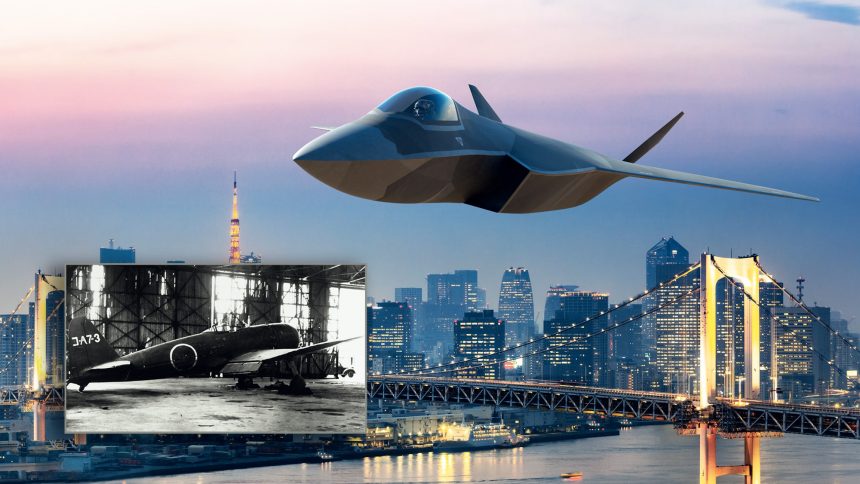The A7M Reppu (Strong Gale) was conceived to succeed the legendary A6M Zero, but it never entered service.
Reports from Japan, quoting defense officials in deep background, have said the country’s MoD (Ministry of Defense) is considering designating its sixth-generation fighter being developed under the collaborative GCAP (Global Combat Air Program) as “Reppu” (Strong Wind/Gale), after a World War II Imperial Japanese Navy fighter. A Kyodo exclusive story, relying on “interviews with multiple government officials,” said the “consideration is carried out in secret” by the MoD leadership.
The A7M Reppu was a cancelled project, conceived as a successor to the legendary A6M Zero series of naval fighters. Few prototypes were produced and some of them destroyed in American air raids, with the general industrial destruction of Japan ensuring the aircraft never saw service. Jeffrey J. Hall, a lecturer at Kanda University of International Studies, said on X that the new jet could be called the ‘F-3 Reppu’.
【独自】次期戦闘機に「烈風」検討 - 防衛省、旧海軍の名称使用https://t.co/4BcqhIf40l
— 共同通信公式 (@kyodo_official) April 27, 2025
The development is also triggering criticism as it seeks to “evoke militarism”, since Tokyo’s Constitution curtailed arms buildups in a bid to steer away from its controversial legacy of the Second World War. While the JASDF has an established nomenclature, like “F” denoting fighter and “C” denoting cargo aircraft, and “no [existing] rules” govern the naming of aircraft making it the prerogative of the government, the plan nevertheless stirs a political minefield.
Japan’s Ministry of Defense is considering adopting “Reppū” (烈風 “Strong Wind”) — the name of a former Imperial Japanese Navy fighter — as the nickname for the next-generation fighter jet it is co-developing with the UK and Italy.
The new jet could be called the “F-3 Reppū.” https://t.co/HtiRYKICrN pic.twitter.com/IzGqmIZoxP
— Jeffrey J. Hall 🇯🇵🇺🇸 (@mrjeffu) April 29, 2025
For instance, the JMSDF’s Soryu submarine, the lead vessel of the class, shares its name with the IJN (Imperial Japanese Navy) carrier Soryu. That ship sank along with three other IJN carriers in June 1942 during the Battle of Midway, after being struck by dive bombers from the USS Yorktown. It is not clear if Japan would rely on this precedent and, so far, no official announcement has been made.
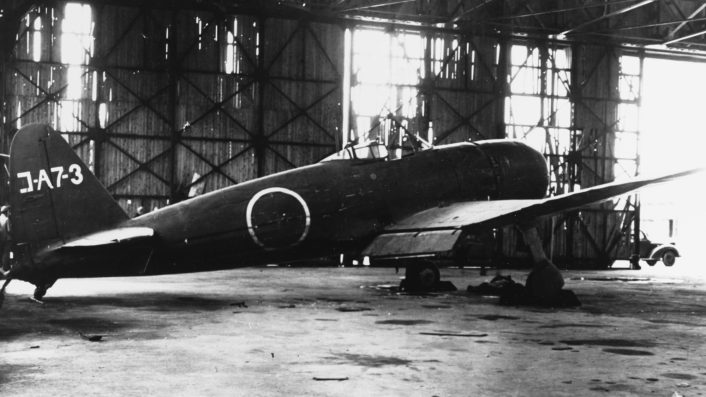
GCAP program
The sixth-generation jet was originally a British-Italian-Swedish collaboration and, following Stockholm’s unofficial exit, transitioned into a British-Japanese cooperation in Dec. 2021 to develop engine and radar prototypes for their Tempest and F-X fighter projects, respectively. Japan was originally working on the domestic Mitsubishi F-X program.
A subsequent announcement in Dec. 2022 unveiled the current Global Combat Air Program (GCAP) which involves London, Rome, and Tokyo. The new fighter is expected to replace the Eurofighters in the United Kingdom and Italy and the F-2s (Japanese derivative of the F-16) in Japan from 2035 onwards.
The program marks a diplomatic first where Japan directly works with Italy and the United Kingdom on an equal financial, industrial and political footing, with equal operational and technological access – a novelty for all three nations after the F-35 program. The three have established trilateral joint bodies with rotating leaderships to oversee the program and synergize the diplomatic, scientific and military functions.
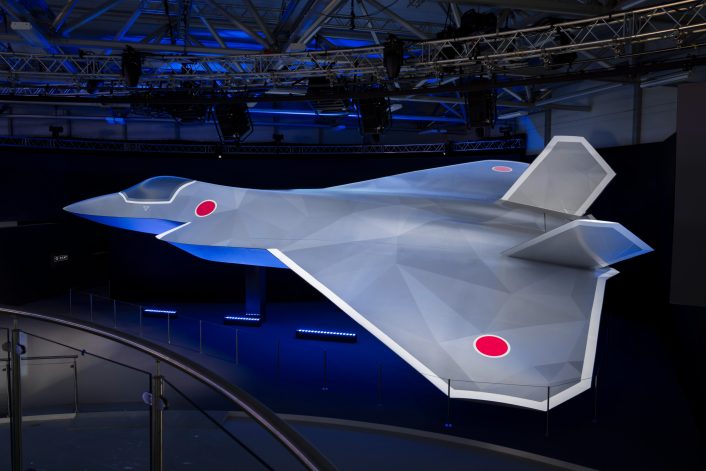
In Dec. 2023, the GCAP International Government Organisation (GIGO) treaty was established, consisting of a Steering Committee (SC) and the GCAP Agency. The SC provides oversight and strategic direction, while the GCAP Agency, headquartered in Reading, UK, coordinates industrial activities and oversees regulatory compliance. The GCAP Agency‘s co-location with the Joint Venture (JV) made up by British, Italian and Japanese companies, established in December 2024, is expected to synergize the political and industrial dynamics.
IMAGE 3: Concept rendition of a GCAP jet. (Image credit: BAE Systems)
A7M Reppu
The A7M Reppu was meant to succeed the legendary Mitsubishi A6M “Reisen” (Zero) series of fighters that flew off Japanese carriers. Known for their immense range, turn rate, climb rate, unparalleled maneuverability as dogfighters and heavy armament, they were beset with poor armor. The Zero had variants from A6M2 to the A6M8, with differing engines and armaments.
The A7M1 developed by Mitsubishi first flew on May 6, 1944 but, while displaying good maneuverability, IJN planners were dissatisfied with the poor output from the Nakajima Homare 22 engine, according to Military Factory. Mitsubishi then flew an improved A7M2 powered by a Ha-43 engine with a 2,200 hp engine, and the aircraft reportedly touched a top speed of 628 km/h.
However, factors like an earthquake in Nagoya destroying the factory, the loss of trained crew, experienced pilots and the general destruction of Japanese industry stymied the A7M Reppu program. Combined with improved Allied tactics and better aircraft like the P-40 Warhawk, P-38 Lightning, P-47 Thunderbolt, P-51 Mustang, the carrier-borne F-4U Corsair and high-flying B-29 Superfortress strategic bombers, undid the Japanese air advantage in general, and killed the A7M project in particular.
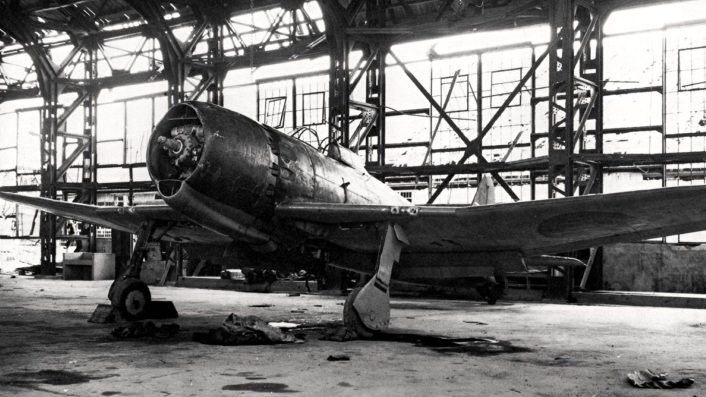
Military Factory added that three more A7Ms were lost to U.S. bombings and the Japanese surrender on Aug. 15, 1945, officially ended the project. The A7M would therefore never see combat. A June 1947 United States Bombing Survey Aircraft Division (USBS) report we found here mentions Mitsubishi produced two A7M1 prototypes and seven A7M2 prototypes, for a total of nine aircraft.
A Reppu captured in an official image at Yokosuka Naval Air Technical Arsenal in late 1945, after the end of WW2, and available on the Navy History and Heritage and Command website is identified as an A7M2 on Wikimedia Commons. The NHHC meanwhile says it is an A7M3. The aircraft bears the tail marking J-A7-3.
Challenges
The GCAP program would nevertheless face its share of challenges and needs to avoid the mistakes from the Eurofighter Typhoon project, according to the UK’s House of Commons committee’s report on the project, as reported by The Aviationist. This primarily includes balancing the complex equations of dynamic diplomatic relations between the partner countries, international industrial partnerships, trade and expectations of workshare agreements for timely deliveries and avoid cost overruns. This extends to ensuring that entry of new partner nations in the program does not overshoot the “crucial 2035 target date.”
The Japanese Ministry of Defence is thinking of renaming the next fighter plane for the Japan Air Self-defence Force,”Reppu”( GCAP) a nickname inspired by the old Navy fighter jet( Misubishi A7M) https://t.co/0wd6TlSTP7 pic.twitter.com/IfG6uMaK7s
— Harikrishnan C Rag (@RagHarikrishnan) April 27, 2025
Secondly, the British parliamentary report also advised to select partner nations not only on their funding ability, but also techno-industrial capability, without altering the timeline. This is while also ensuring the exportability of the platform and avoiding disputes over foreign sales, as was witnessed over the Eurofighter Typhoon program. Securing foreign sales has a broader economic imperative, lack of which hurts production lines, making “recruitment and retention” of the workforce “a major challenge.”
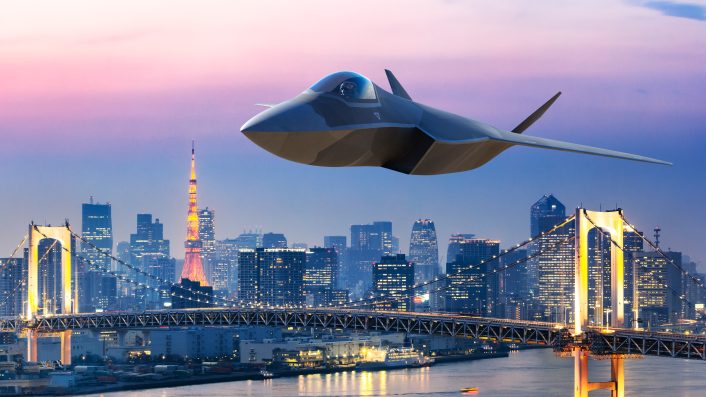
The British Parliament also notes the impact of Japan and its evolving domestic political scene over military buildups on the sticky issue of export. While foreign sales of the GCAP could possibly be hampered by Tokyo’s “cultural antimilitarism” rooted in the aftermath of the Second World War, the report also acknowledges the changing Japanese public opinion and defense posture, making it important to continue supporting Japan’s participation in the GCAP.
The good news is the partners have agreed an industrial joint venture to deliver #GCAP. The bad news is we are all going to have to wait a little longer to learn its name. Promised it will be something “iconic”, a la #SEPECAT #Panavia #Eurofighter, but still to be decided… pic.twitter.com/0ZGu0AIljI
— Gareth Jennings (@GarethJennings3) December 13, 2024
Additionally, the committee noted “great confidence in the commitment and capabilities” of Japan and Italy, and that it was “impressed by the depth of the Japanese offer and the technical progress they have made so far.” Italy’s Institute for International Affairs (Istituto Affari Internazionali) also recommended a set of measures for the smooth political, industrial and technological execution of the project in a Mar. 2025 study.

